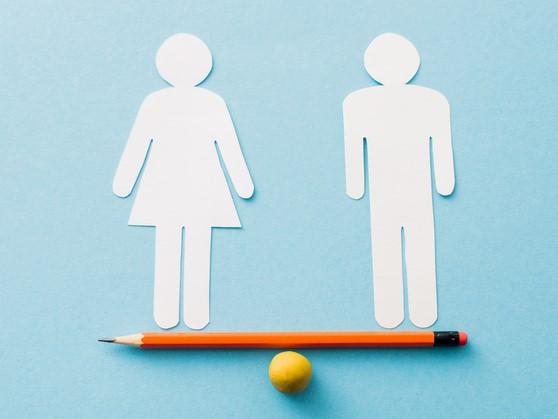There is much to celebrate when it comes to universities’ progress on gender equality, but there are areas that require significant improvement, too.
THE’sGender Equality: How Global Universities are Performing – Part 2 report, published today in collaboration with the Unesco International Institute for Higher Education in Latin America and the Caribbean, finds that increasing numbers of universities globally are reporting data on their performance on gender equality indicators, with particular growth in Asia. A growing number are also training faculty on gender equality and implementing a gender perspective in existing or new academic programmes and research projects, increasing their efforts to facilitate the impact of female researchers and advocating for gender equality beyond their campus walls.
However, despite making up more than half of higher education students, women are still under-represented as lecturers, researchers and particularly leaders. In all regions, universities are more likely to focus on providing access and support to women than on measuring their progress and success. And most universities are unable to provide relevant evidence of their policies and services that support women’s advancement, as revealed in the first THE/Unesco-IESALC report on gender equality, which was published in March. This suggests that while certain codes may ostensibly be in place, they are not necessarily being implemented across institutions.
- We need to create a tutoring army to level up education
- Urgent steps to prevent the pandemic stalling women’s academic careers
- How to change the default settings that exclude women in sub-Saharan Africa from higher education
There are no quick-fix solutions, but higher education institutions can do more to speed up the pace of progress. Here are 10 recommendations from our report for universities on how to tackle gender inequality:
Devise a comprehensive approach to tackling gender inequality
Making substantial progress requires a long-term vision supported by the senior leadership team, an official set of values and regulations, which are enforced, and dedicated staff or offices that are responsible for gender equality initiatives at departmental level. Ensure that there is regular communication between the departments, centres and units that undertake gender equality initiatives.
Involve the entire university community
Bring together students, staff and academics of all genders to identify examples of gender bias and devise solutions. Embed activities into teaching programmes, research projects and staff workloads to ensure that work on gender equality is recognised and valued.
Move beyond focusing on ‘women in STEM’
Discussions on improving gender equality in academia often focus on increasing the number of women in STEM subjects. But not all STEM subjects suffer from female under-representation at the student level; there are more female than male students in life sciences, for example. At the same time, male students are under-represented in many “caring” subjects, such as psychology and education. Examine trends at a more granular discipline level to ensure that gender equality measures are targeted appropriately. The under-representation of male students in some subjects has implications for women, and men and should not be overlooked.
Introduce more initiatives focusing on the progress and success of women
Improving access for female students and staff is important but not sufficient. Universities need to ensure they also track success rates and outcomes for women compared with men. It is critical to periodically review these data and use them to make evidence-based decisions that improve women’s outcomes. While 86 per cent of universities globally said that they systematically measure and track women’s application, acceptance or entry rates, only 69 per cent said they track women’s graduation rates and have plans aimed at closing any gap, based on data from the 938 institutions that participated in the THE Impact Rankings 2022 table on SDG 5 (gender equality).
Go beyond national policies and laws
Legal frameworks relating to gender equality have improved in most countries in the past decade and these regulations are helpful in providing a basic set of anti-discrimination and anti-harassment red lines. But to successfully make progress on gender equality and change their internal cultures, universities should be more ambitious and develop their own internal regulations and policies, which can better target their own gaps in gender equality.
Ensure that policies and services are widely communicated and implemented
Policies and services relating to gender equality are only worthwhile if they are known by the university community and enforced across the institution as a whole. Details of policies and services should ideally also be made publicly accessible to enable the general public to hold the institution accountable for their commitments. While most of the universities participating in the SDG 5 Impact Rankings table claimed they had various policies and services that contribute to gender equality, such as a policy of non-discrimination against women and provision of women’s access schemes, the share that was able to supply relevant evidence of such initiatives was below 50 per cent in all cases.
Regularly review gender equality policies
Existing policies should be examined at least every five years and, if necessary, updated to reflect changing trends, local contexts and best practice.
Do not be put off by resistance
Making change is not easy and resistance to new initiatives and policies is inevitable. Accept this early on and focus on how any challenges can be overcome. The University of Guadalajara in Mexico, one of the institutions we identified as leading on gender equality work in the Latin America region, found that some of its initiatives faced resistance at first, but eventually the culture within the organisation and at the student level did start to change.
Collect and analyse gender-disaggregated data regularly
The state of gender equality at a given institution can only be properly understood using data. The THE impact indicators provide a good starting point for the data that should be routinely collected and analysed to measure and report your progress.
Engage with gender equality experts in other sectors outside higher education
This could involve discussing the best ways to measure or tackle gender inequality. Collaborating with other industries, as well as within the sector, will ensure you can tap into the most advanced and innovative knowledge, wherever it is based. It will also mean you are less likely to spend time building methodologies that have already been established.
Ellie Bothwell is rankings editor at Times Higher Education.
If you would like advice and insight from academics and university staff delivered direct to your inbox each week, sign up for the Campus newsletter.




comment1
(No subject)